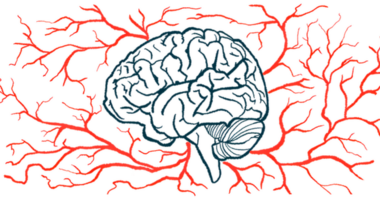Blockade of PAAN Enzyme Improves Motor Function in Mice

Inhibition of a DNA-destroying enzyme called PAAN protected against nerve cell death and lessened motor symptoms in mouse models of Parkinson’s disease, a study found.
The findings overall demonstrate an important role for PAAN in Parkinson’s disease mechanisms and highlight the therapeutic potential of targeting this enzyme as a treatment approach.
“Studies like this show that there is hope in intervening with neurodegenerative disease, and that its worst effects may not be inevitable,” Valina Dawson, PhD, a professor at Johns Hopkins University School of Medicine and the study’s senior author, said in a press release.
The study, “PAAN/MIF nuclease inhibition prevents neurodegeneration in Parkinson’s disease,” was published in Cell.
In Parkinson’s, the alpha-synuclein protein forms toxic clumps, or aggregates, in cells. These aggregates trigger a type of cell death called parthanatos, which results in the progressive loss of nerve cells — particularly those that produce the neurochemical dopamine.
New treatment approaches aimed at stopping the progression of cell loss in Parkinson’s are needed, and targeting key players in parthanatos may be one such approach.
PAAN, or parthanatos-associated apoptosis-inducing factor nuclease, plays the final role in this process, where it destroys cellular DNA. But whether it plays a specific role in Parkinson’s cell death wasn’t known.
To investigate further, Dawson’s team injected alpha-synuclein into the brains of both normal, or wild-type, mice and mice that lacked PAAN to generate a mouse model of Parkinson’s. After six months, mice injected with the toxic protein typically lost about half of their dopamine-producing nerve cells and showed depleted levels of dopamine and its precursors, as is seen in Parkinson’s patients. Consequently, behavioral abnormalities, including motor declines, were observed.
While this was the case in wild-type mice, mice without PAAN did not experience cell loss and dopamine loss, and behavioral deficits were prevented — altogether suggesting that PAAN does indeed mediate the cell loss observed in Parkinson’s disease.
In a series of additional experiments in mice and cell cultures, the researchers found that PAAN’s nuclease activity — or that leading to DNA destruction — specifically mediated these effects, while PAAN’s other functions appeared not to be involved.
With its role in Parkinson’s established, the team sought to identify whether blocking PAAN’s nuclease activity might be a therapeutic approach.
“We needed to find chemical compounds that block PAAN’s ability to destroy cellular DNA while leaving its other critical activities untouched,” Dawson said.
The team screened thousands of chemicals housed in the Johns Hopkins Drug Library to find ones that might serve this purpose. The most promising showed an ability to prevent PAAN from degrading DNA and protected cells in culture against alpha-synuclein mediated death, while leaving PAAN’s other functions undisturbed.
To enable sufficient concentrations of that chemical to reach the brain, the researchers designed a derivative of it — dubbed PAANIB-1 — that showed similar therapeutic properties, but with an enhanced ability to enter the brain.
Oral administration of PAANIB-1 was tolerated well and prevented the loss of dopamine-producing nerve cells, as well as dopamine and its precursors in multiple mouse models of Parkinson’s. The treatment also significantly mitigated the motor deficits usually observed in these models.
The findings overall support a role for PAAN inhibitors in the treatment of Parkinson’s disease.
“Since increasing evidence indicates that parthanatos play a prominent role in a wide range of neurologic diseases, including stroke, Parkinson’s disease, amyotrophic lateral sclerosis, and Alzheimer’s disease, the therapeutic utility of PAAN/MIF nuclease inhibition will likely extend to other forms of neurodegeneration and cell death where parthanatos plays a role,” the researchers wrote.
Future studies will seek a deeper understanding of PAANIB-1’s cellular effects, the researchers noted.







